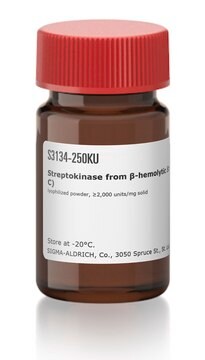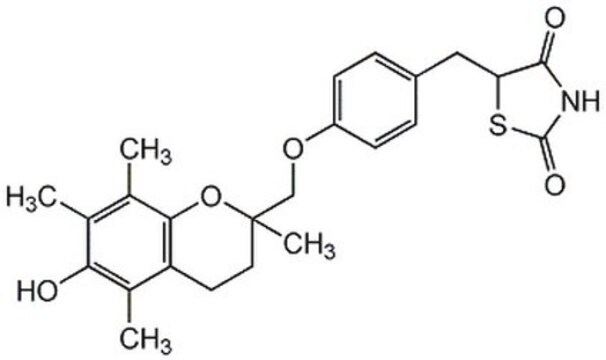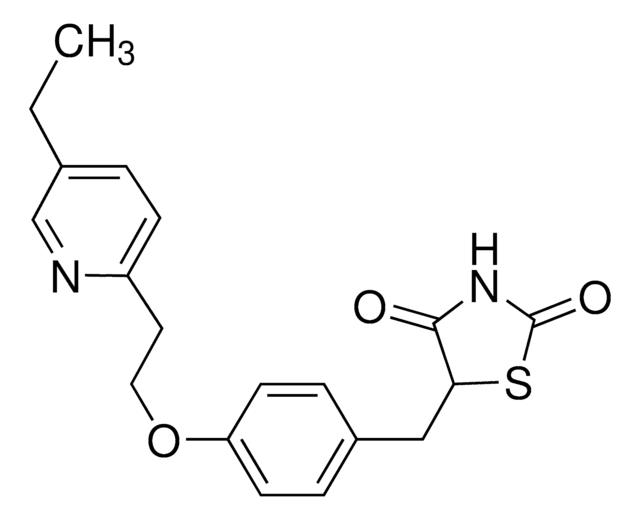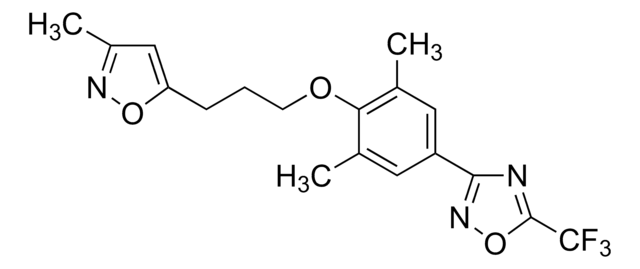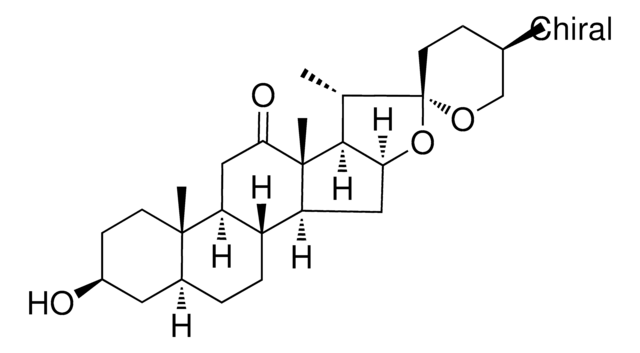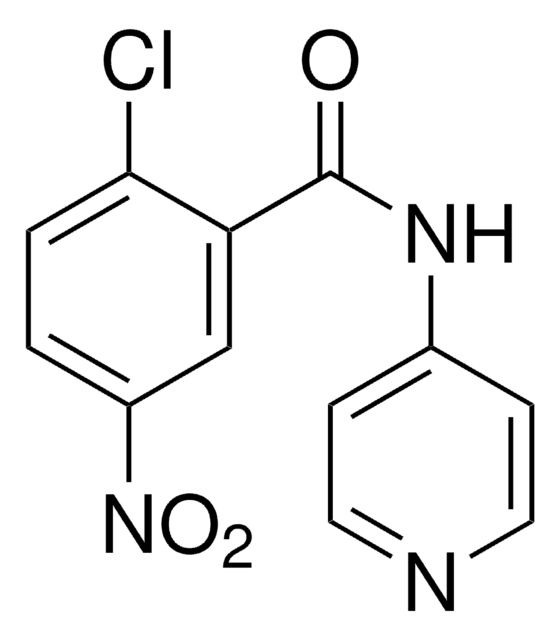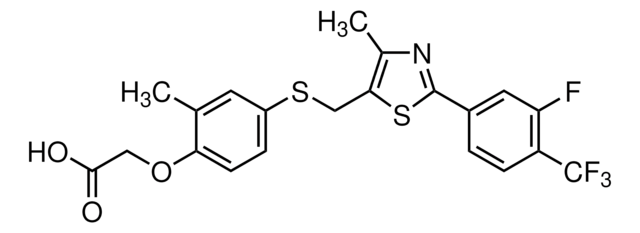T2573
Troglitazone
≥98% (HPLC), powder, PPARγ agonist
Sinonimo/i:
(±)-5-[4-[(6-Hydroxy-2,5,7,8-tetramethylchroman-2-yl)methoxy]benzyl]-2,4-thiazolidinedione, CS-045
About This Item
Prodotti consigliati
Nome del prodotto
Troglitazone, ≥98% (HPLC)
Saggio
≥98% (HPLC)
Stato
powder
Colore
white to off-white
Solubilità
DMSO: 20 mg/mL
Stringa SMILE
Cc1c(C)c2OC(C)(CCc2c(C)c1O)COc3ccc(CC4SC(=O)NC4=O)cc3
InChI
1S/C24H27NO5S/c1-13-14(2)21-18(15(3)20(13)26)9-10-24(4,30-21)12-29-17-7-5-16(6-8-17)11-19-22(27)25-23(28)31-19/h5-8,19,26H,9-12H2,1-4H3,(H,25,27,28)
GXPHKUHSUJUWKP-UHFFFAOYSA-N
Informazioni sul gene
human ... PPARA(5465) , PPARG(5468)
Descrizione generale
Applicazioni
Azioni biochim/fisiol
Caratteristiche e vantaggi
Nota sulla preparazione
Codice della classe di stoccaggio
11 - Combustible Solids
Classe di pericolosità dell'acqua (WGK)
WGK 2
Punto d’infiammabilità (°F)
Not applicable
Punto d’infiammabilità (°C)
Not applicable
Dispositivi di protezione individuale
Eyeshields, Gloves, type N95 (US)
Scegli una delle versioni più recenti:
Possiedi già questo prodotto?
I documenti relativi ai prodotti acquistati recentemente sono disponibili nell’Archivio dei documenti.
I clienti hanno visto anche
Articoli
Glucose metabolism is regulated by the opposing actions of insulin and glucagon. Insulin is released from pancreatic ß cells in response to high blood glucose levels and regulates glucose metabolism through its actions on muscle, liver, and adipose tissue.
Il team dei nostri ricercatori vanta grande esperienza in tutte le aree della ricerca quali Life Science, scienza dei materiali, sintesi chimica, cromatografia, discipline analitiche, ecc..
Contatta l'Assistenza Tecnica.


